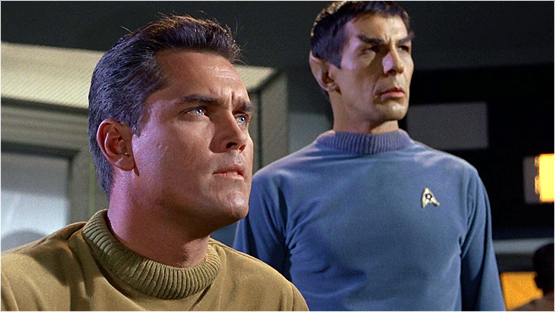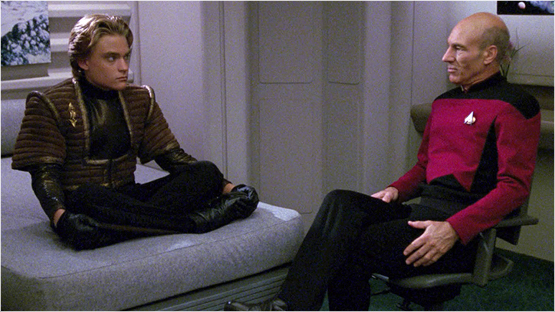An all-new Star Trek novel from New York Times bestselling author Greg Cox, taking place in the blockbuster Original Series era!
The year is 2255, not long after the events of the Original Series episode “The Cage.” A young Spock is science officer on the U.S.S. Enterprise, under the command of Captain Christopher Pike, when an outbreak of deadly Rigelian fever threatens the crew.
Reviewing the Starfleet medical database, Dr. Phillip Boyce comes up with a highly experimental and untested new treatment that might save the crew. Just one problem: it requires a rare mineral substance, ryetalyn, which is not easily obtained…except on a remote alien colony near the Klingon border.
But borders are somewhat blurry in this part of galaxy. Pike will need to tread carefully in order to avoid provoking an armed conflict with the Klingons—or starting an all-out war.
Order Child of Two Worlds:
The Star Trek novels are a fantastic way to explore time periods that we don’t get to see a lot of in the course of “canon” Trek. One such period is set before Kirk’s five-year mission, while Captain Christopher Pike commanded the U.S.S. Enterprise. We’ve been offered glimpses in the past, most notably through the two-part episode “The Menagerie,” which re-used footage from the aborted pilot “The Cage” to present an all-new adventure.
Child of Two Worlds joins just a few past novels featuring this captain and crew, including Once Burned by Margaret Wander Bonnano and The Rift by Peter David. It is always a treat for me when we get more adventures featuring Captain Pike, as I have always wondered what Star Trek would have been like had that first pilot been purchased by NBC.
 This tale features Spock’s early days, learning to live with humans aboard the Enterprise.
This tale features Spock’s early days, learning to live with humans aboard the Enterprise.
The story itself is a fascinating tale about a young woman who finds herself torn between two cultures. A Cyprian, who at a young age was captured by the Klingons, has been taken from her adoptive Klingon family by her biological sister and recovered by the Enterprise. Now, the planet of her birth is demanding her return and reunion with her biological family.
Complicating matters is the fact that the Enterprise crew has been infected with Rigellian fever, and the Cyprians control the supply of ryetalyn, a compound that would cure the fatal disease (see: “Requiem for Methuselah”). They, of course, are refusing to turn it over until and unless Captain Pike returns Merata to them.
Greg Cox does a wonderful job in pairing Spock and Merata. Both of them are the titular “child of two worlds,” and Spock is uniquely sympathetic to Merata’s plight. The exploration of their two natures means that the reader learns more about Spock through what Merata is going through. It is an interesting pairing that highlights a great deal about Spock’s character. Additionally, Spock is written very well by Mr. Cox. At this point in his life, Spock is still uncertain of his place in either Vulcan or human society. His younger nature comes across very well in the pages of Child of Two Worlds.
In some ways, this story is reminiscent of the TNG episode “Suddenly Human,” in which a young human boy was captured by the Talarians and raised in their culture. His grandmother, an elderly Starfleet admiral, desperately wants him returned. In the case of Child of Two Worlds, the role of the grandmother is replaced by an entire planet, and their desire to see Merata returned coupled with a tense political situation lends a very interesting angle to the story.
 Merata’s situation is reminiscent of Jono in the TNG episode “Suddenly Human.”
Merata’s situation is reminiscent of Jono in the TNG episode “Suddenly Human.”
Finally, Greg Cox very effectively places this story firmly in the time period by using terminology that was used in “The Cage.” “Lasers” instead of phasers, for instance, or “hyperdrive” instead of “warp drive.” Number One is used quite effectively as well, and she gets to show off her formidable leadership skills while leading the landing party on the surface of Cypria.
Cox is even able to account for the seeming anachronism of hardcopy printouts on the bridge of the Enterprise, chalking it up to a charming eccentricity on the part of Captain Pike.
